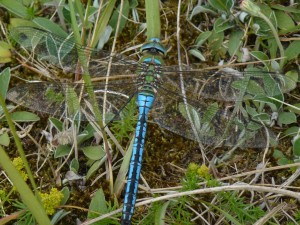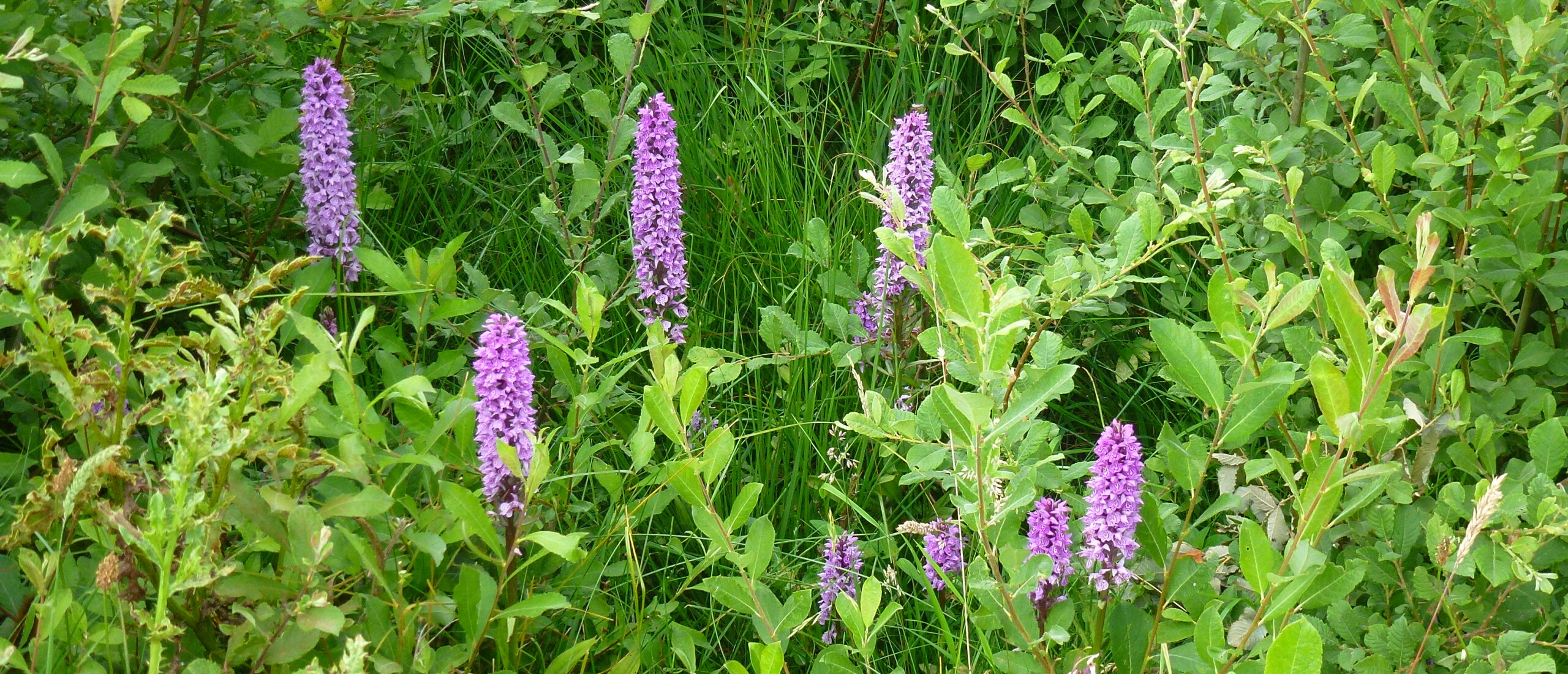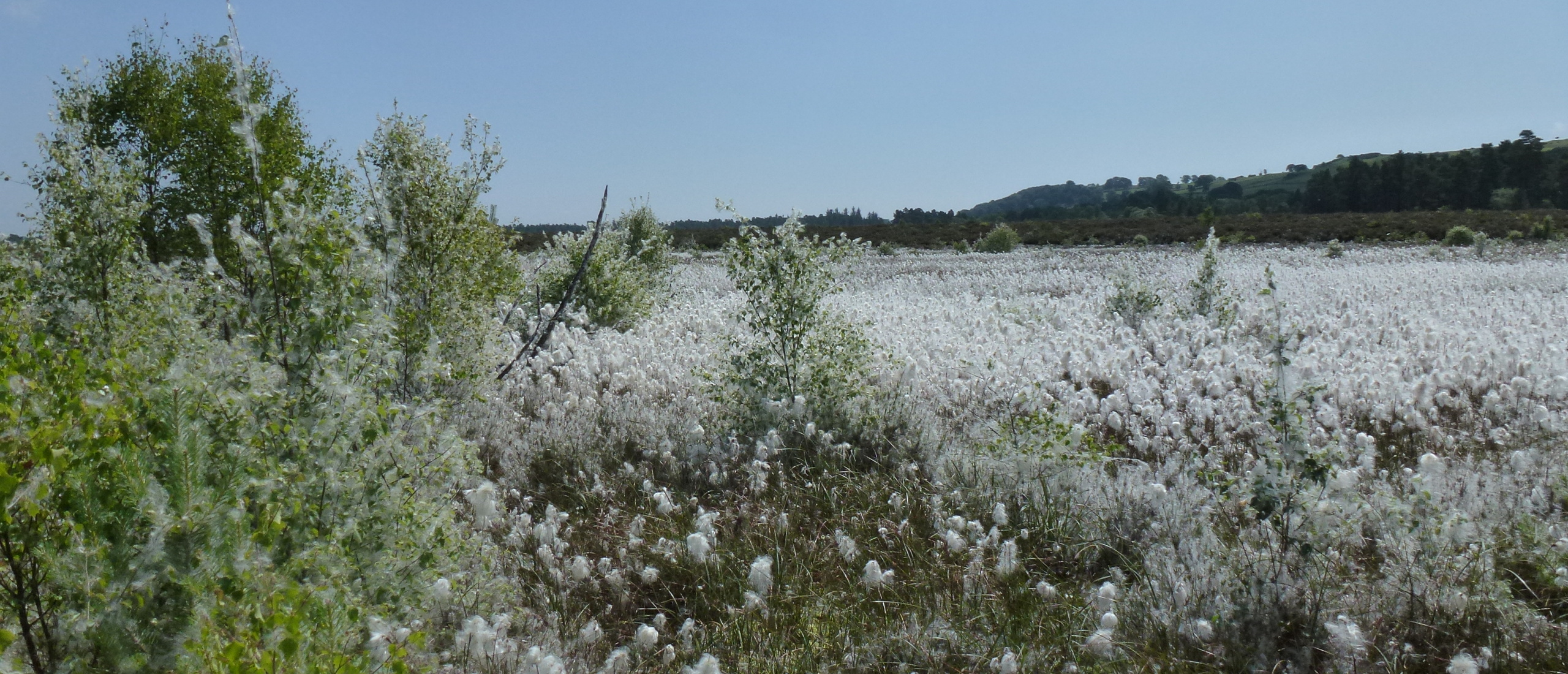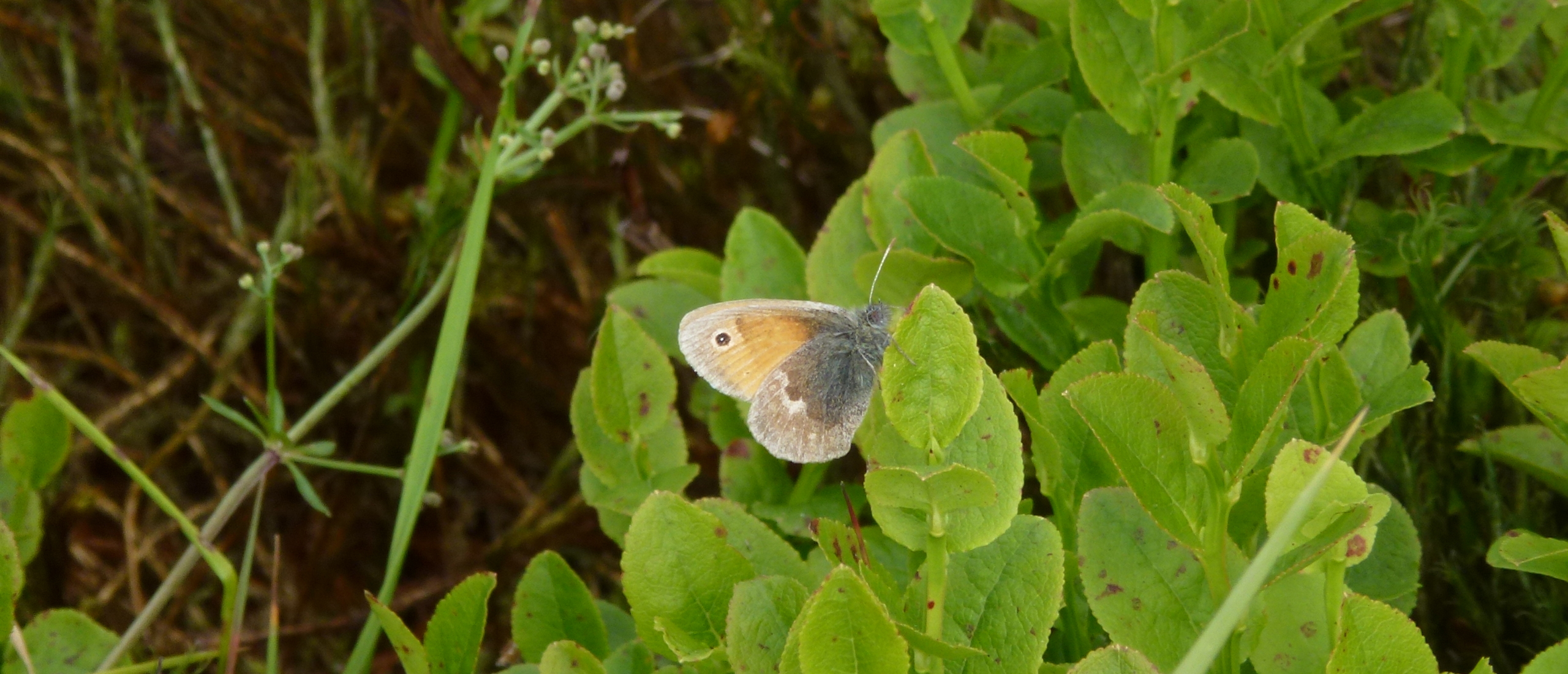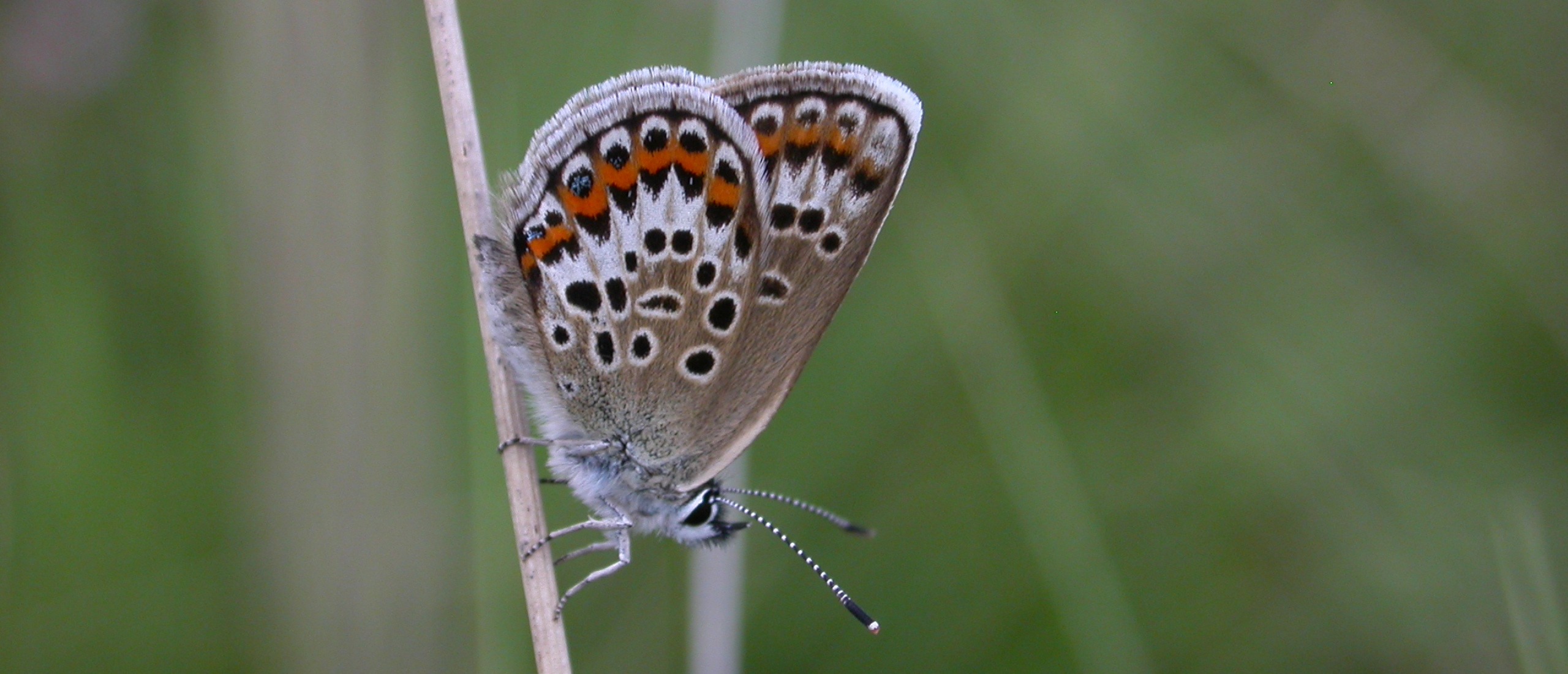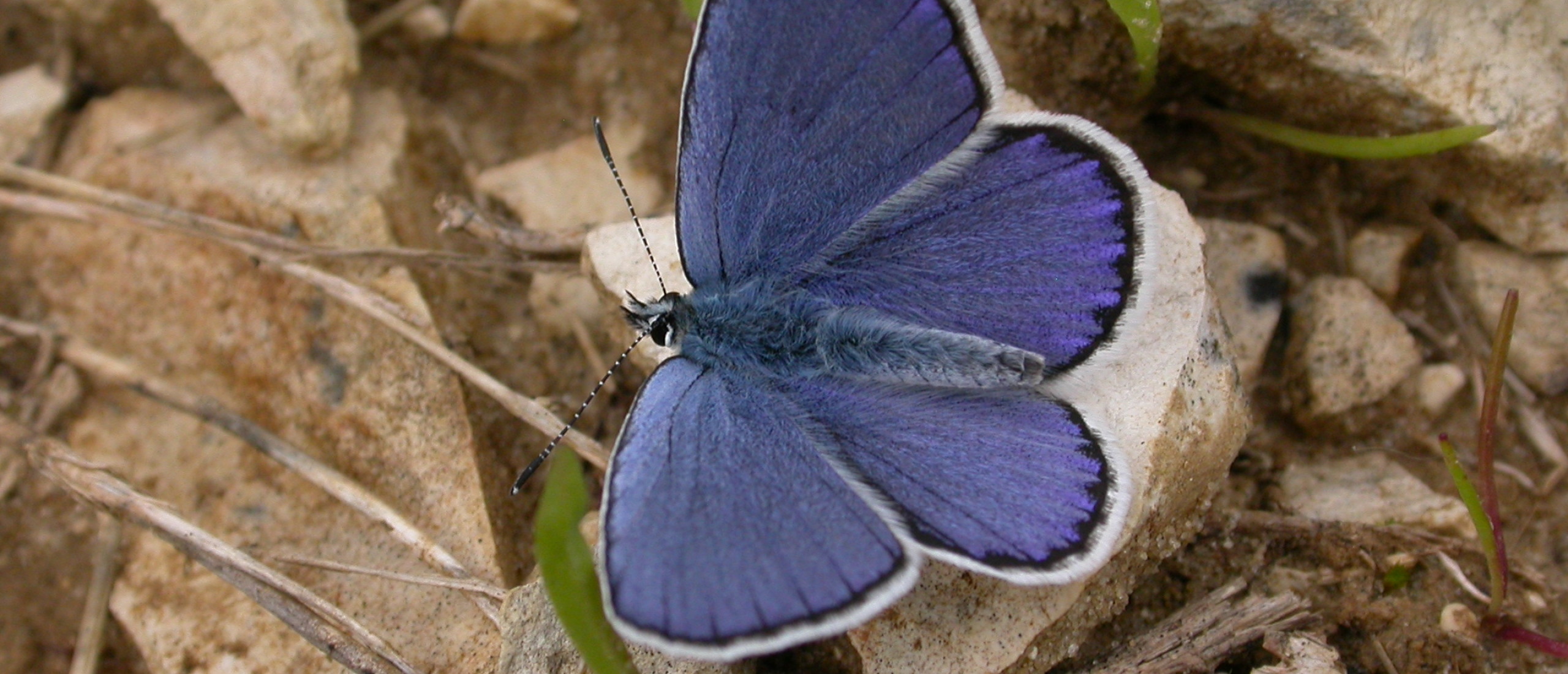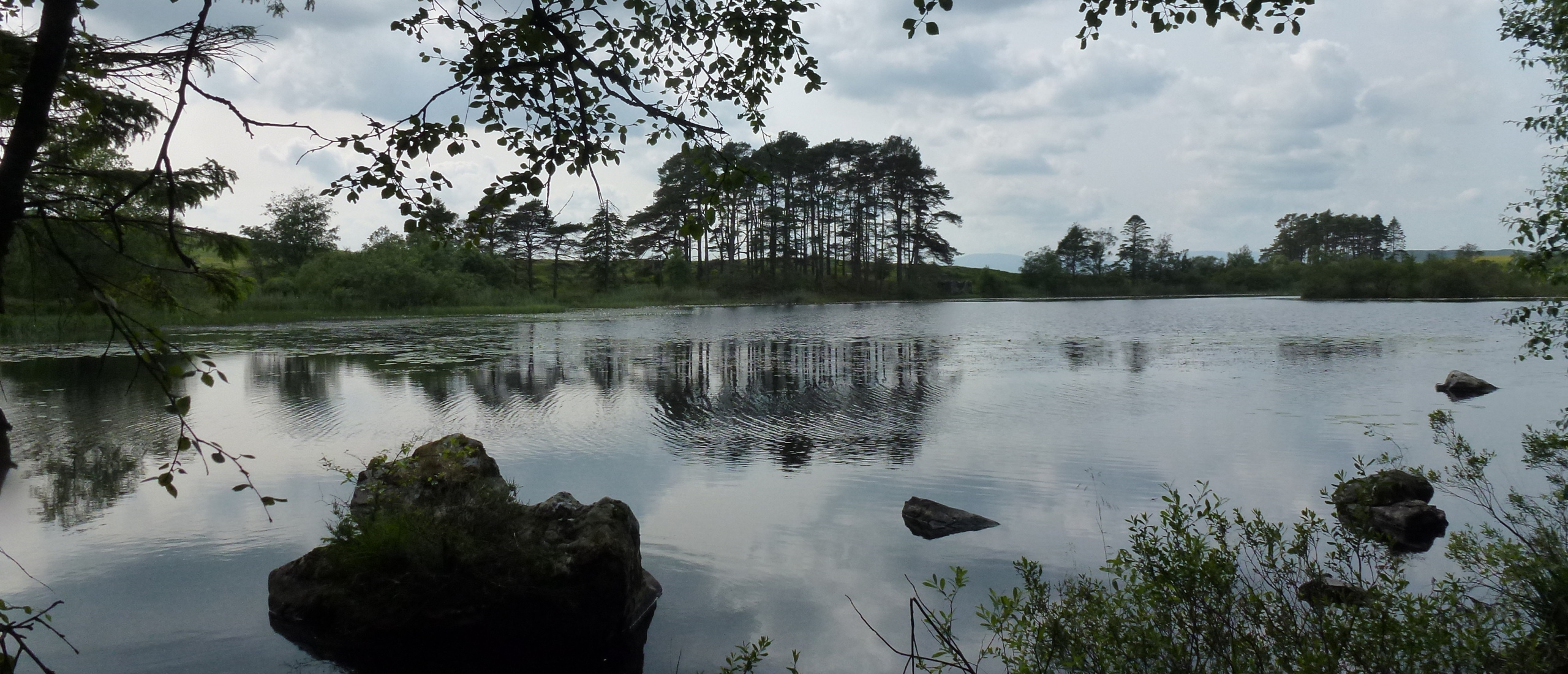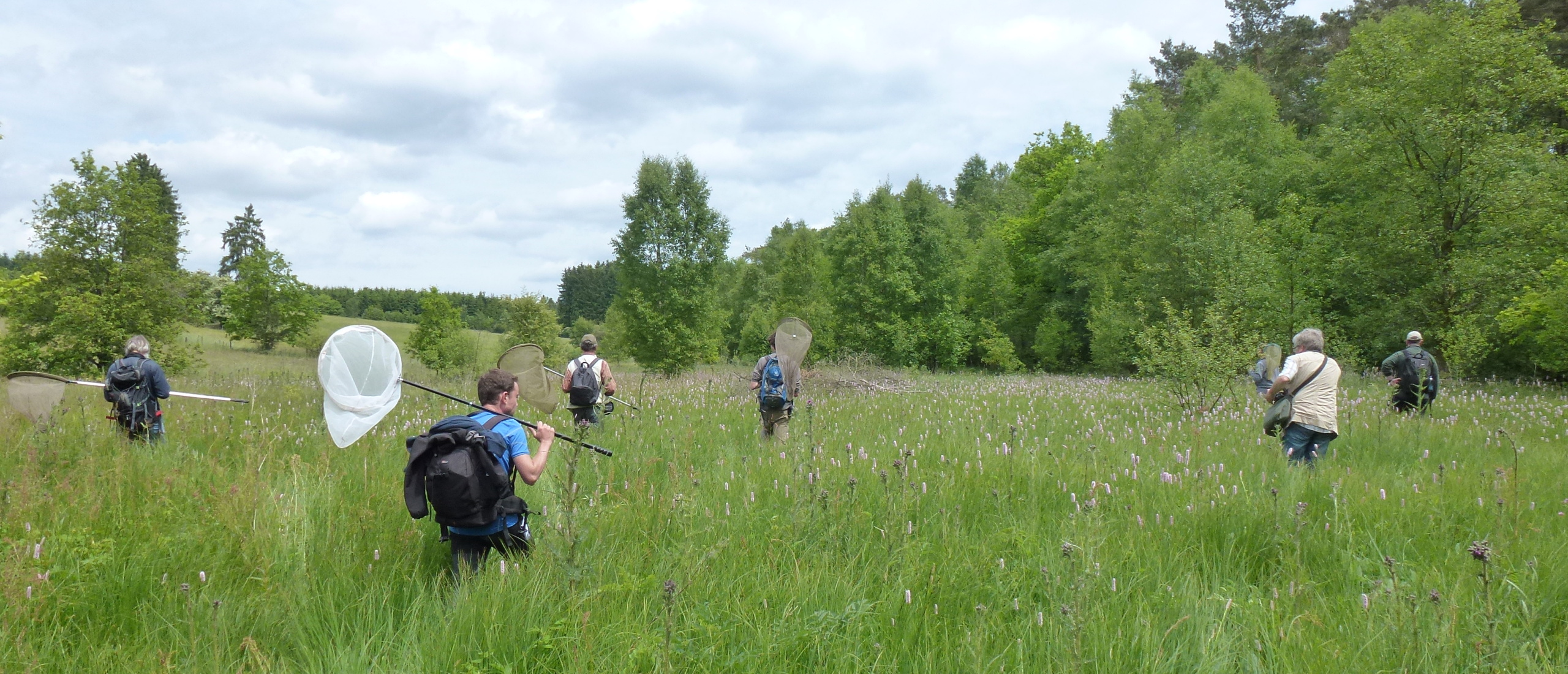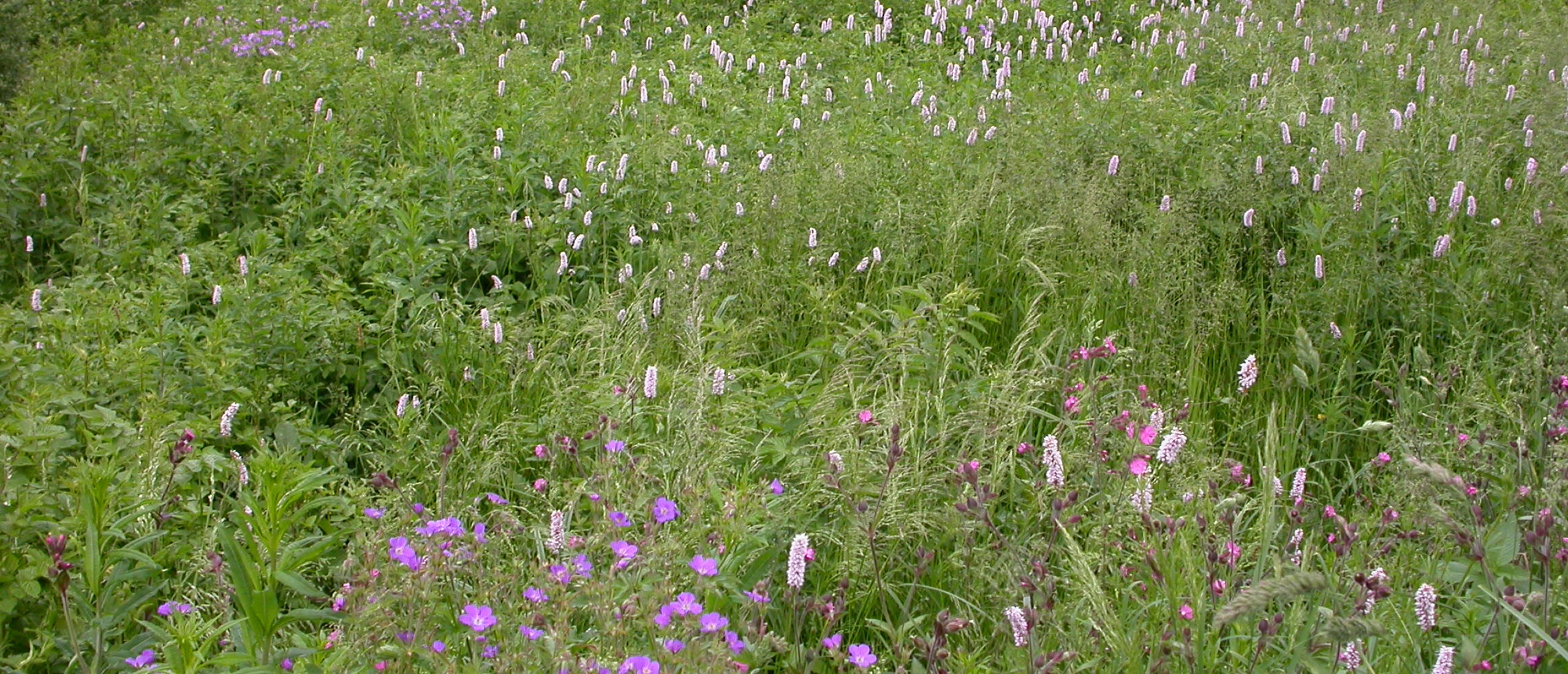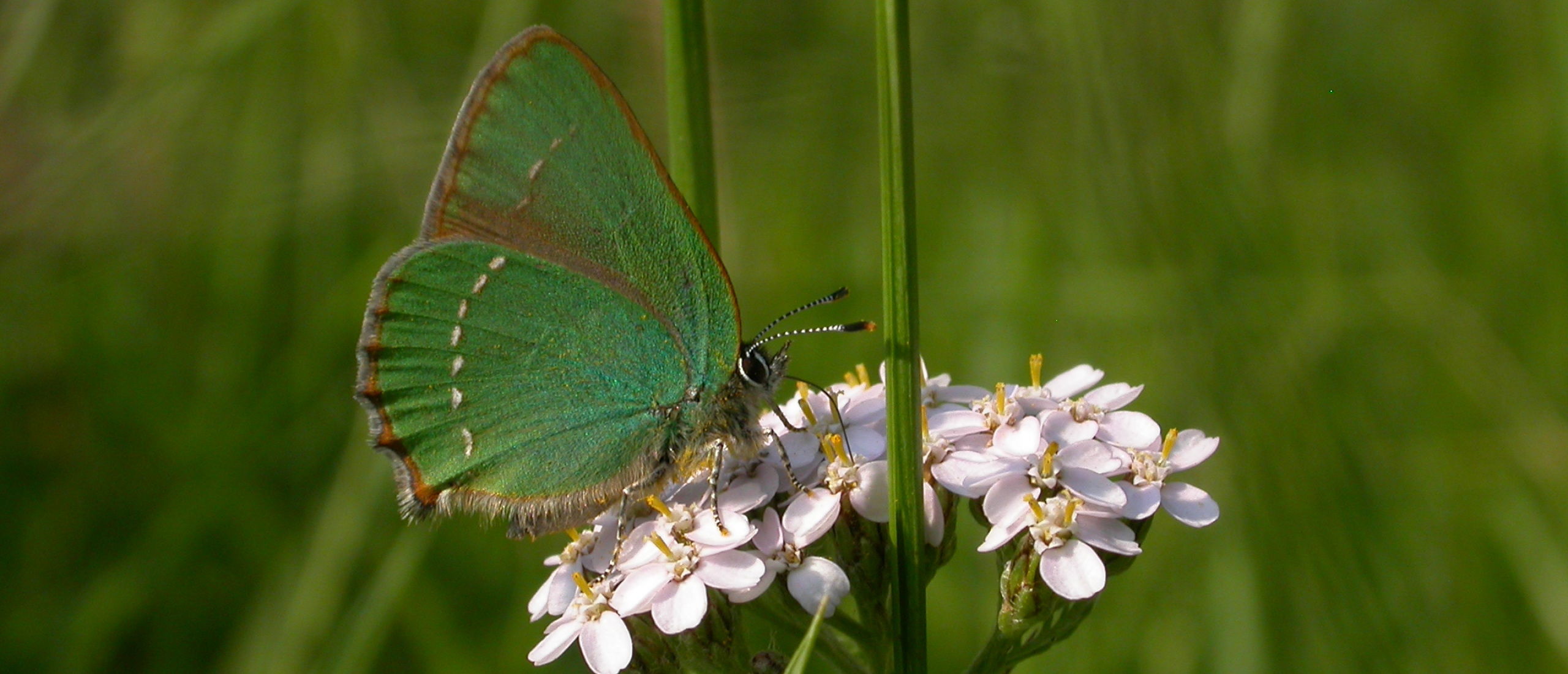
Good news all round - well, almost! Yesterday, Tuesday 9th July, I spent the afternoon in the beautiful Hoge Veluwe national park, in the centre of the Netherlands. This wonderful area of heathland, pine and deciduous forest is one of the last bastions of some Dutch butterflies, one of which I was particularly on the lookout for, the Alcon Blue, Maculinea alcon. This butterfly, with its incredible relationship with ants and its requirement of the rare Marsh Gentian, Gentiana pneumonanthe, is extremely restricted in its localities, and individual colonies can number as few as ten individuals in a given year. In past years, I have observed this species, in a tiny patch of damp grass with a few Marsh Gentian plants (which are difficult to see now as they are not yet flowering) and Cross-leaved Heath, which the adults use as a nectar source. However, this time, there was not a sign of this enigmatic butterfly. Perhaps I was too early, and they have not yet emerged, or perhaps this tiny colony has succumbed - I did not manage to find any here last year either.
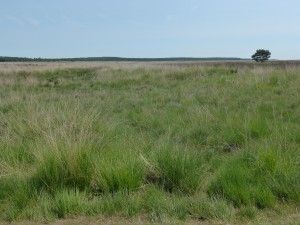 The (former?) habitat of the Alcon Blue
The (former?) habitat of the Alcon Blue
Not all was gloom, however. Not only did I see at least 20 Heath Fritillaries, Mellicta athalia, even in areas of the park where I had not seen them before, but I also saw at the very least 30 Dark Green Fritillaries, Argynnis aglaja. One of the factors holding butterflies back in this dry heathland is the lack of nectar-bearing flowers. In recent years, at least two patches of mixed wild flowers have been sown specifically for butterflies, protected with an electric fence against the predations of Wild Boar. The mix included the wonderful Corn Cockle, once common in cornfields, but now virtually extirpated in the wild. The patch in the southern part of the park was alive with Dark Green Fritillaries, whereas the other, further north, attracted several Heath Fritillaries. If only more such patches could be planted!
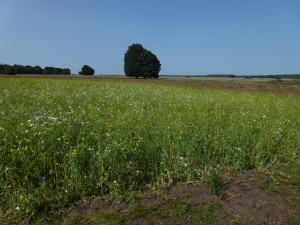 A patch of wildflowers sown specifically for butterflies
A patch of wildflowers sown specifically for butterflies
Other butterflies I saw were two fresh-looking Green Hairstreaks, Callophrys rubi, a perhaps surprisingly late record as this is a truly spring-flying species, but I have frequently observed them in July in this park. Numerous Large Skippers, Ochlodes venatus, and at least a few Small Skippers, Thymelicus sylvestris, were in evidence, as well as several Small Heaths, Coenonympha pamphilus.
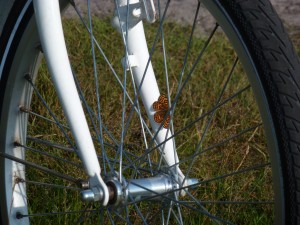 A Heath Fritillary that landed on my bike!
A Heath Fritillary that landed on my bike!
Today, Wednesday 10th July, turned out to be one of the highlights of my butterfly year so far. I was due to leave Ijmuiden on the ferry to Newcastle (I am writing this post on board), and I had ideas of visiting some butterfly areas on my way to the port. However, the day dawned cold and damp, with a strong wind and some slight drizzle. I decided to turn my attention to birds, and managed to see a Marsh Sandpiper, Tringa stagnatilis, close to Amsterdam, which was a new species for the Netherlands for me. Despite the cold, I was surprised to see several Red Admirals, Vanessa atalanta, and a couple of Small Tortoiseshells, Aglais urticae. Spurred on by these sightings, I decided I would return to my original plan, just in case a clearance might occur - and it did, with some slight gleams of sun just as I arrived at my first butterfly destination, close to Castricum, in the dunes that run parallel with the North Sea along much of the Dutch coast. These dunes, mostly covered with woodland and scrub, form one of the great butterfly areas in the Netherlands, and the sheltered valleys with their swathes of wild flowers host strong populations of several species that are hard, if not impossible, to see elsewhere. My first target was the Niobe Fritillary, Argynnis niobe. I had only occasionally observed this species in the Netherlands before, once indeed in the Veluwe, where it is now extinct. As I approached the area where they had been reported, the weather looked far from promising, but almost immediately I left the track, a Niobe flew up from just in front of me, and I then went on to find at the very least 30 individuals, some looking quite fresh, and others not, including one that was so faded that it appeared almost white. They were sheltering among some low brambles, but when disturbed, they flew off vigorously, and were hard to approach when they settled again, making photography difficult.
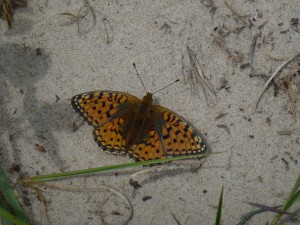 A Niobe Fritillary - why is there a grass stem whenever one does not want one?
A Niobe Fritillary - why is there a grass stem whenever one does not want one?
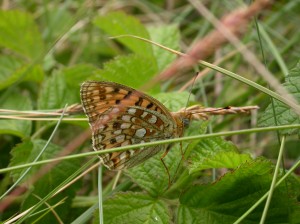 A Niobe showing its distinctive underside - this time with 2 grass stems across the image!
A Niobe showing its distinctive underside - this time with 2 grass stems across the image!
Why the Niobe has disappeared from its former strongholds in the centre of the country is a mystery. As few as 15 years ago, it outnumbered the Dark Green Fritillary, which still survives in reasonable numbers. Perhaps the lack of flowering plants affected it. One particular part of the park used to harbour large numbers of Ragwort plants, which attracted numerous fritillaries, but I observed park officials removing these plants en masse by the roots a few years ago. When I protested, they informed me that if this were not done, large animals would be poisoned. Perhaps the Niobe that I photographed here in 2006 was one of the very last individuals of this population. Luckily, in the dunes they seem to be doing relatively well.
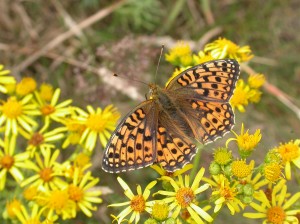 The Niobe I photographed in 2006 - was this the last individual to grace the Veluwe?
The Niobe I photographed in 2006 - was this the last individual to grace the Veluwe?
Flushed with this success, but slightly conscious of the clock ticking towards the time when I needed to check in for the ferry, I decided to head north to hunt for another butterfly for which the dunes forms one of its last Dutch bulwarks, the Ilex Hairstreak, Satyrium ilicis. Contrary to what its name might suggest (Ilex is the Latin name of Holly), this species requires low-growing oaks. I had hoped to see it in France and Belgium last weekend, but did not succeed. Having passed through some much taller oakwoods, I came out into an area of low oaks, and almost immediately I spotted a small, dark shape fluttering round a young tree, and it proved indeed to be a fresh-looking Ilex Hairstreak. I went on to see at least six, two of which were highly cooperative and allowed me to photograph them at extremely close range.
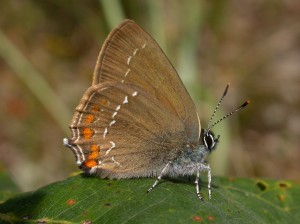 The Ilex Hairstreak, which posed so cooperatively
The Ilex Hairstreak, which posed so cooperatively
On my way back to the car, I spotted a small, gingery-coloured butterfly low in the grass, and as soon as it landed, I needed to carefully approach it from the front, always difficult as they normally see one and fly off. Luckily this one did not, and sure enough, I was able to clearly observe the jet black underside of the tips of its antennae, clinching this butterfly's identity as another new species for my 2013 list, the Essex Skipper, Thymelicus lineola. Virtually the only reliable way of separating Essex from Small Skippers is by examining this feature, the Small Skipper's antennae being orangey-red.
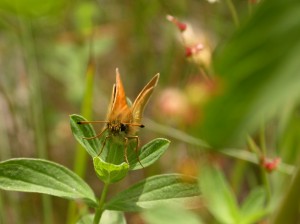 The Essex Skipper, showing the black tips to its antennae
The Essex Skipper, showing the black tips to its antennae
By now the time was really running short, but I felt I had to check a locality only a few yards off my route to Ijmuiden, specifically for yet another potential new species, the Queen of Spain Fritillary, Issoria lathonia. This species is also most easily found in the dunes, and it only took me perhaps ten minutes of searching to find one individual, which sadly did not allow me to photograph it. This was a pity as it is a supremely beautiful species, particularly the underside, which bears almost unbelievable silver spots (hence its name). I did manage to photograph a bright Emperor Dragonfly, Anax imperator, which landed in the grass for a few seconds.
I then had to make my way rapidly to the ferry port - and now I am engaged in what could be described as a butterfly-lover's suicide: returning to Scotland at the height of the butterfly season. Other than Iceland, one could hardly choose anywhere with a more impoverished butterfly fauna than Scotland, situated as it is far from the continental landmass, and suffering from a butterfly-unfriendly climate. I will be hard pushed to find 15 species in total during the coming five weeks, but I shall try to make the best of it. What it does mean is that I shall miss some key species in the Netherlands, Belgium and northern France, which will have finished their flight period by the time I return towards the end of August. Still, c'est la vie, I suppose - and who knows what surprises I may find? Butterfly list as of 10th July 2013: 65 species



